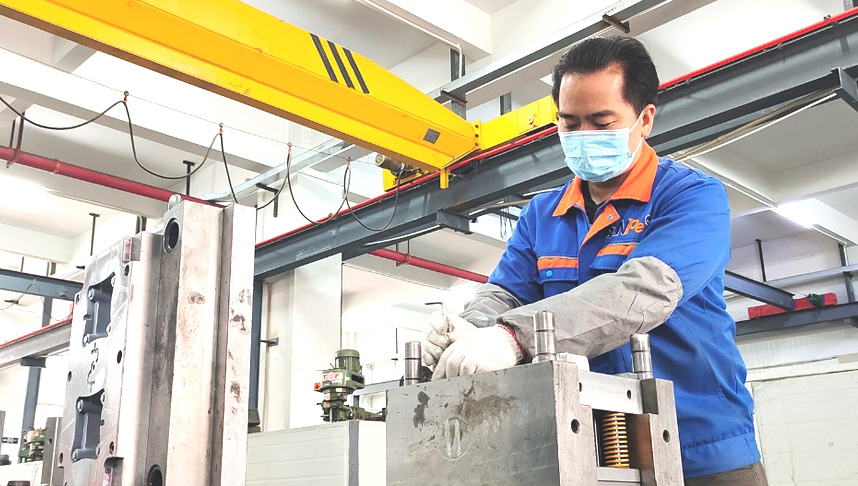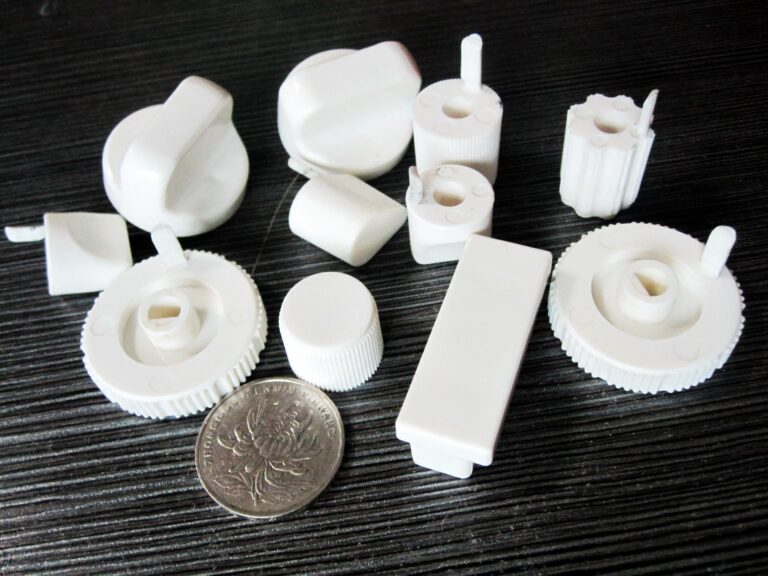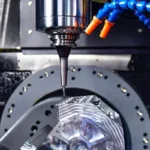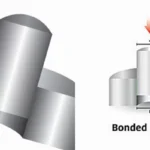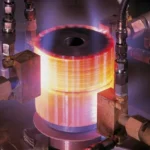In the manufacturing industry, tooling is a crucial stage in the process of producing high-quality parts that meet precise specifications. Converting raw materials into finished products necessitates a combination of advanced technology, expertise, and specialized tooling equipment. However, before production can begin, the necessary tools must be created. The procedure of manufacturing these tools significantly influences the efficiency and precision of part production.
So, what exactly is tooling? In this article, we will explore its importance in manufacturing, the basics of tool design, and the various types of tooling available.
What Is Tooling In Manufacturing?
Tooling, often known as machine tooling, is the process of shaping or forming materials to create parts with precise tolerances. This process utilizes various equipment such as jigs, molds, patterns, fixtures, and cutting tools to cut, shape, and form the parts. The specific tools required for tooling vary based on the type of production, as well as the size and nature of the tooling needed.
It’s crucial to have the appropriate tools to perform tasks accurately and maintain smooth operations. An ineffective manufacturing process is often the result of inadequate tooling. Additionally, any modifications to tooling technology can significantly impact production volume, quality, and cost.
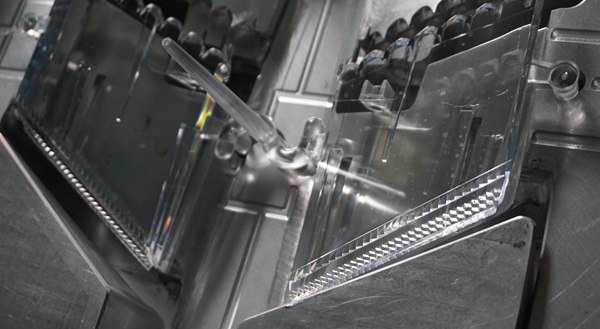
Significance Of Tooling In Manufacturing
Tooling for manufacturing has a bigger impact on the mass production of goods as it can speed up production and lower the cost of operation. Proper tooling is necessary for producing high-quality items quickly.
Precision in Manufacturing
Precision engineering and tooling are integral to manufacturing, ensuring that components are produced with high accuracy and consistency. Whether for injection-molded parts or intricate aerospace components, the precision of the tooling directly impacts the quality of the final product.
Efficiency and Cost-Effectiveness in Manufacturing
Effective tooling procedures streamline manufacturing workflows, enabling the production of large quantities of identical parts with minimal variation. This is particularly evident in methods like injection molding. While the initial investment in production tooling can be substantial, the long-term cost per unit is often significantly lower compared to other manufacturing processes.
Customization and Innovation
Tooling facilitates the creation of unique and customized components, fostering innovation. Advanced machining techniques, such as CNC machining, have revolutionized tooling, making it possible to achieve sophisticated designs and complex geometries.
Versatility Across Materials
Tooling is highly versatile, accommodating a wide range of materials, including various polymers and metals like steel and aluminum. This versatility allows for the selection of appropriate materials tailored to specific applications, ensuring that the final product meets the required standards for strength, durability, and aesthetics.
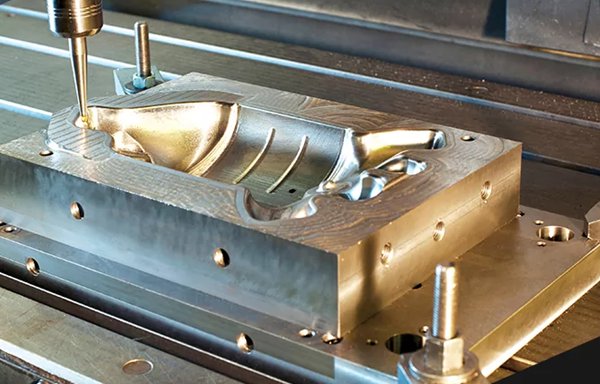
What Are The Fundamentals Of Tooling Design?
There are too many tooling design decisions that a product developer and their manufacturing provider must make together to discuss exhaustively. Nevertheless, it is still feasible to narrow these options down to a few distinct categories that apply to all tools, regardless of their role. Here are the common fundamentals of tooling design.
Cycle Times
Fitting tools with aftermarket thin film coatings is an effective way to extend their lifespan and enhance processing speed. However, these coatings come at an additional cost, which must be weighed against the potential increase in productivity.
During a typical production run, how often will the tool be used? For a pressure die-casting mold, the answer might be once every two minutes. Yet, each use exposes the die to extreme heat and pressure. Pushing the tool to achieve the lowest cycling times could lead to premature wear or even breakage if done at the expense of increased processing speed.
Production Volume and Tool Durability
To avoid the expense of producing multiple tools for a single production run, a robust tool is essential. Therefore, the tool must be made of strong metal, which is defined by its ability to withstand repeated stress and plastic deformation without rupturing or permanently changing shape.
Long-lasting tools must endure mechanical, chemical, and thermal degradation while maintaining their tolerances. However, the costs and production time for durable tools are higher than those for temporary ones.
Material Used for Tooling
What kind of tooling material works best? The optimal choice is the raw material that offers the highest performance for your application in the shortest time and at the lowest cost. Thus, the selection depends on the tool’s requirements, including the number of parts it must produce, its lifespan, and the precision needed.
Not all tooling materials are suitable for every use case. For example, aluminum can be used to create adequate tools and dies for plastic injection molds but is unsuitable for CNC milling cutters due to its lower strength and hardness compared to steel.
Changing Frequency of Tooling
The time required to change or replace a production machine’s tool is an often-overlooked efficiency factor. Large and heavy tools like injection molds are too bulky for a human operator to handle and require hoists and cranes for movement, potentially taking hours to replace. This downtime affects production costs.
Since production workers are paid even when no components are being produced, tool-changing time becomes a significant cost factor. Therefore, initial design estimates should consider tool-changing efficiency whenever possible.
Part Precision and Tolerance
To produce an extremely precise finished part, the tool itself needs to be manufactured with high precision. This means the tool will cost more to construct and may need more frequent replacement or maintenance to maintain its tolerances. Well-made tools can extend their useful life through re-sharpening, repairing, or calibrating.

Typical Two Types Of Tooling
Based on several factors such as manufacture, material, durability, qualities, and applicability, we can divide tooling into two categories.
Soft Tooling
Soft tooling is a cost-effective technique often employed in cast urethane molding, enabling businesses to quickly produce medium-to-low-volume products. Silicone is the most commonly used material in the cast urethane industry for low-volume production runs and prototyping.
One of the key advantages of soft tooling is its flexibility in material requirements, allowing producers to use a variety of materials without significant compatibility concerns. This approach is particularly beneficial for projects that require small quantities of practical products with a fine finish, such as prototypes.
However, soft tooling does have its limitations. Tools made from soft materials, such as silicone, often lack the durability and wear resistance of those made from hard materials. For example, silicone tools typically need replacement after producing no more than 25 components. Additionally, once the tooling process is complete, making adjustments to soft tools can be challenging.
Hard Tooling
Hard tooling is a common method for injection molding, utilizing resilient metals like steel or nickel alloys that can withstand numerous manufacturing cycles. This type of tooling allows producers to quickly manufacture large quantities of parts. Hard tooling is ideal for projects that require tight tolerances, specific testing specifications, and high functional standards, making it perfect for creating precise, long-lasting parts.
However, hard tooling comes with higher initial costs and longer manufacturing lead times compared to soft tooling. The process of creating hard tools is more time-consuming because it involves heat treatment, post-processing, and additional machining to achieve a smooth finish.
Choosing Between Soft Tooling and Hard Tooling
When deciding between soft tooling and hard tooling, consider the specific needs of your project. Soft tooling, which uses materials like silicone, is ideal for prototyping and short-run production due to its quick assembly and lower upfront costs.
On the other hand, hard tooling, made from durable metals like steel, ensures a longer mold life and consistent part quality, making it the best choice for high-volume production. Although hard tooling has higher initial costs, it significantly reduces the cost per part in long-term production scenarios.
Different Stages Of Tooling In Manufacturing
There are three main stages for tooling manufacture: prototype tooling, bridge tooling, and production tooling.
Prototype Tooling
The initial phase in the tooling manufacturing process is prototype tooling. This involves creating molds and tools to produce prototypes or small batches of products. These tools are typically single-use and are essential for testing and validating the design before moving on to mass production.
Bridge Tooling
Bridge tooling acts as an intermediary between the completion of prototype development and the commencement of production tooling. It is less durable than production tooling, requiring a smaller investment and faster construction time. Manufacturers frequently use bridge tooling to facilitate the transition to higher volume production. It is often employed to refine the manufacturing process and gain a thorough understanding of the product design.
Production Tooling
In the production tooling phase, the final product is manufactured and tested. This stage is crucial as it lays the foundation for large-scale mass production. Production tooling is designed for long-term use, ensuring that parts are produced to precise specifications and standards. Although it demands a significant investment of time and resources, it ensures efficiency and cost-effectiveness in high-volume production.

Which Processes Are Used To Make Tooling?
Rapid tooling is created using two primary production methods: hard tooling and soft tooling. In a competitive market, hard tooling takes longer to produce compared to soft tooling, which is more cost-effective. Soft tooling is commonly created through silicone casting, milling, or 3D printing, depending on specific requirements.
Similarly, hard tooling can be manufactured through milling or machining. However, unlike soft tooling, hard tooling can also be produced using Electrical Discharge Machining (EDM) or precision turning.
Metal Materials For Production Tooling
In manufacturing and production, the choice of materials for production tooling is essential for ensuring durability and performance. Hardened metals such as tool steel, aluminum, and various alloys are often used due to their excellent wear resistance, durability, and ability to withstand the demands of high-volume production.
Tool steel is particularly favored for creating robust molds and dies because of its superior hardness, toughness, and machinability. Additionally, advanced materials with unique properties, such as high-temperature resistance, lightweight characteristics, and corrosion resistance, like composite tooling, are well-suited for specific industrial applications.
Considerations And Tips When Machining Tooling
The type of tooling machined often depends on the specific needs of the project. Below are some considerations when machining tooling.
Part Geometry
For less complex geometries, soft tooling is an ideal choice due to its cost-effectiveness and faster turnaround times. Soft tooling methods, such as 3D printing or CNC machining, simplify redesigns and allow the creation of intricate tools within hours or days.
Tooling Lifespan
The lifespan of the tooling is a critical consideration in machining. Hard tooling is preferable for those seeking durability. While soft tools are effective for approximately 25–50 injection molding shots and have a shorter lifespan, hard tools made from metal offer greater temperature resistance and can last for thousands of shots.
Material Selection
When machining tooling, the selection of the right material is essential. Factors such as the type of material to be machined, production volume, and desired tool lifespan should all be considered. Some materials offer greater longevity and durability, though they may be more expensive.

What Factors Affect The Cost Of Tooling?
Although numerous factors affect tooling prices, they are all connected to the type of material being worked and the tool’s specification.
Part Specifications
The cost of tooling is influenced by the number of operations a CNC machine must perform. Simpler tasks such as basic cuts or bores require fewer tools, whereas more complex operations like twisting, intricate cutting, and boring necessitate a greater number of tools.
Additionally, parts may require specific surface treatments like polishing or features that facilitate the attachment of other components, such as gaskets. Each added specification step increases the tooling costs.
Applications
Industries like medical, aerospace, and defense demand parts with very stringent specifications and high strength. Cutting materials such as titanium and hardened steel in these industries requires tools with higher hardness, which are understandably more expensive than those used for softer materials.
Quality of Tools
The quality of tools used in manufacturing significantly impacts tooling costs. Producing high-quality tooling typically involves superior materials and more precise engineering and manufacturing techniques, which increase initial costs. However, investing in high-quality tools can lead to substantial long-term savings and increased efficiency.
Get Started With Rapid Tooling At AS Prototypes
At AS Prototypes, we offer effective and affordable tooling solutions. Our rapid tooling services are designed to expedite your product development process, providing you with swift access to advanced tooling options. Additionally, we offer comprehensive services including CNC milling, turning, 3D printing, silicone molding, and surface finishing. Contact us today for personalized support.
FAQs
What are the basic features of a tool?
The basic features of a tool in manufacturing include:
- Core half
- Cavity half
- Runner
- Ejector system
- Cooling lines
- Side actions
What is rapid tooling?
Rapid tooling allows manufacturers to quickly and affordably produce parts before mass production begins. This process involves considering mold materials, hand-load inserts, and a supplied mold base.
How much does manufacturing tooling cost?
The cost of tooling varies depending on the type of product being created. For a company, tooling costs typically range from 3% to 6% of the total production costs. Tools are generally considered consumable, as they eventually need to be replaced.

